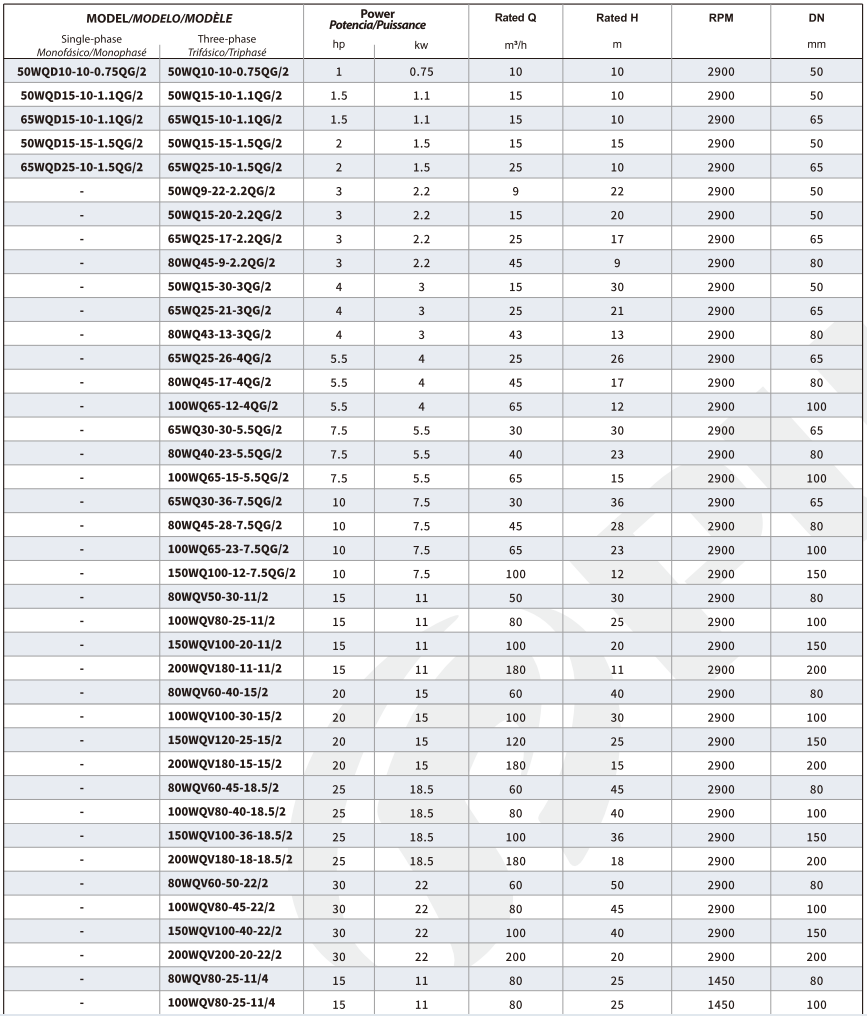Sewage pumps are essential for moving wastewater from lower areas (like basements) to the main sewage lines. While designed for long-term use, they require regular care to maintain optimal performance. Here’s a guide on how often to replace your sewage pump, signs of failure, and ways to extend its life.
Sewage pumps generally last between 7 to 10 years depending on several factors:
Pump quality and brand: Higher-quality pumps, like those from Purity, tend to last longer due to features such as corrosion resistance and efficient motors.
Usage frequency: Pumps that handle more wastewater or are used more often tend to wear out sooner.
Maintenance: Regular maintenance, such as clearing blockages and inspecting components, can extend a pump’s life.
Environmental factors: Pumps exposed to extreme temperatures or heavy debris may need replacement sooner.

Figure | Purity WQV sewage Pump
1. Failure to Start or Continuous Cycling
If the pump fails to start or constantly cycles without completing a full pumping cycle, it could indicate internal problems like a faulty motor or capacitor.
2. Unusual Noises
Grinding, whining, or banging noises often signal mechanical issues such as worn-out bearings or impellers, which could lead to pump failure.
3. Poor Performance or Reduced Flow
If the pump struggles to move wastewater or the flow rate decreases, it might indicate motor wear, impeller damage, or clogging that regular maintenance can’t fix.
4. Dirty or Contaminated Water
Discolored or contaminated water can indicate internal damage or a compromised filter system, necessitating a pump replacement.
5. Frequent Repairs
Constant repairs, especially for motor or electrical issues, may suggest the pump is nearing the end of its useful life and should be replaced.

Figure | Purity WQV sewage Pump Parameter
To maximize your pump’s lifespan, follow these maintenance tips:
1. Routine Maintenance and Inspections
Regular maintenance helps detect and address issues early, ensuring the pump operates efficiently for years. Schedule annual inspections by a professional.
2. Avoid Clogs
Clogs are a leading cause of pump failure. Regularly clean the intake screen and ensure that only wastewater and toilet paper are flushed into the system. Educate users about what should not be flushed to prevent blockages.
3. Proper Usage
Avoid overloading the pump. Consider installing a backup system or monitoring device to detect any irregularities early.
4. Choose Quality Brands
Opt for high-quality pumps like Purity pump, which offer advanced motor protection and efficient operation, helping to prevent overheating and failure during peak usage.
Sewage pumps are built to last but require regular attention to ensure optimal performance. By understanding the signs of wear, conducting regular maintenance, and investing in a reliable pump brand like Purity Pump, you can extend your pump’s lifespan and avoid costly replacements. If your pump shows signs of failure or is approaching its expected lifespan, consult a professional to determine if replacement is necessary. Regular care ensures effective and safe wastewater management for years to come.